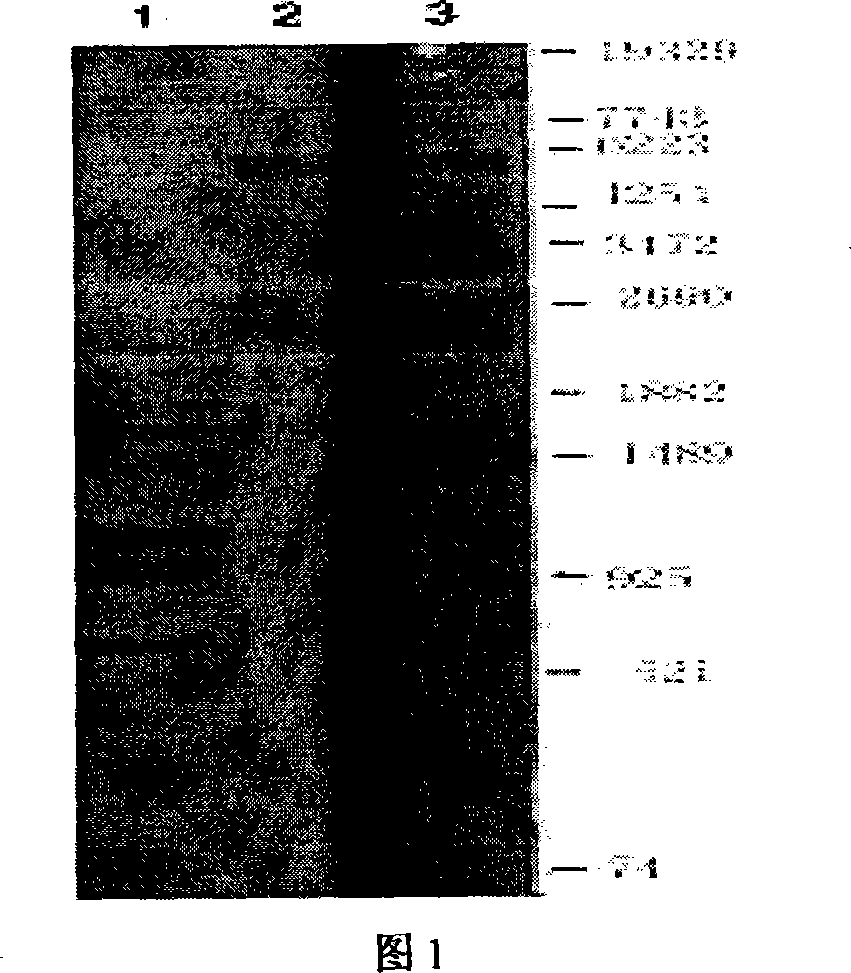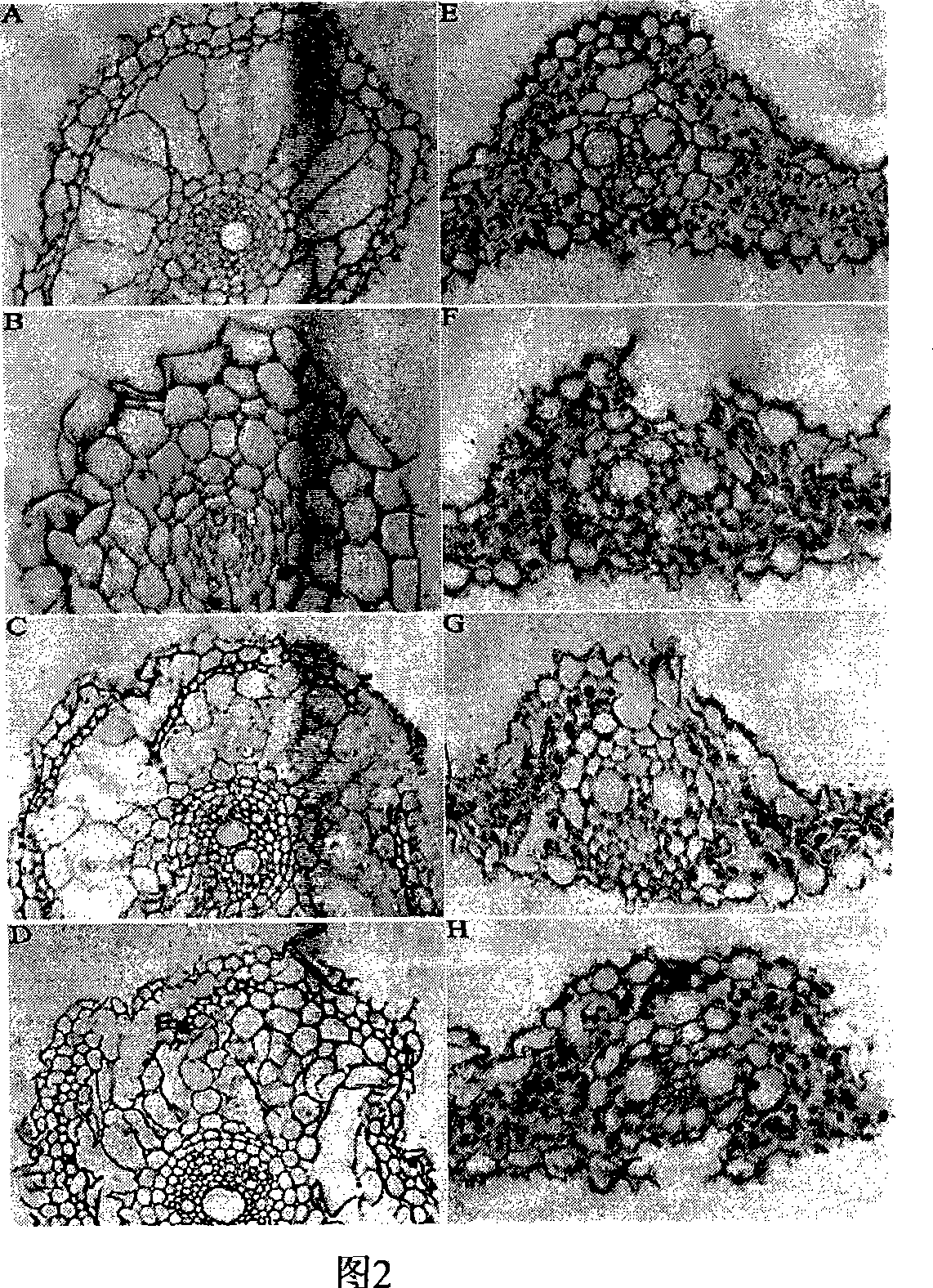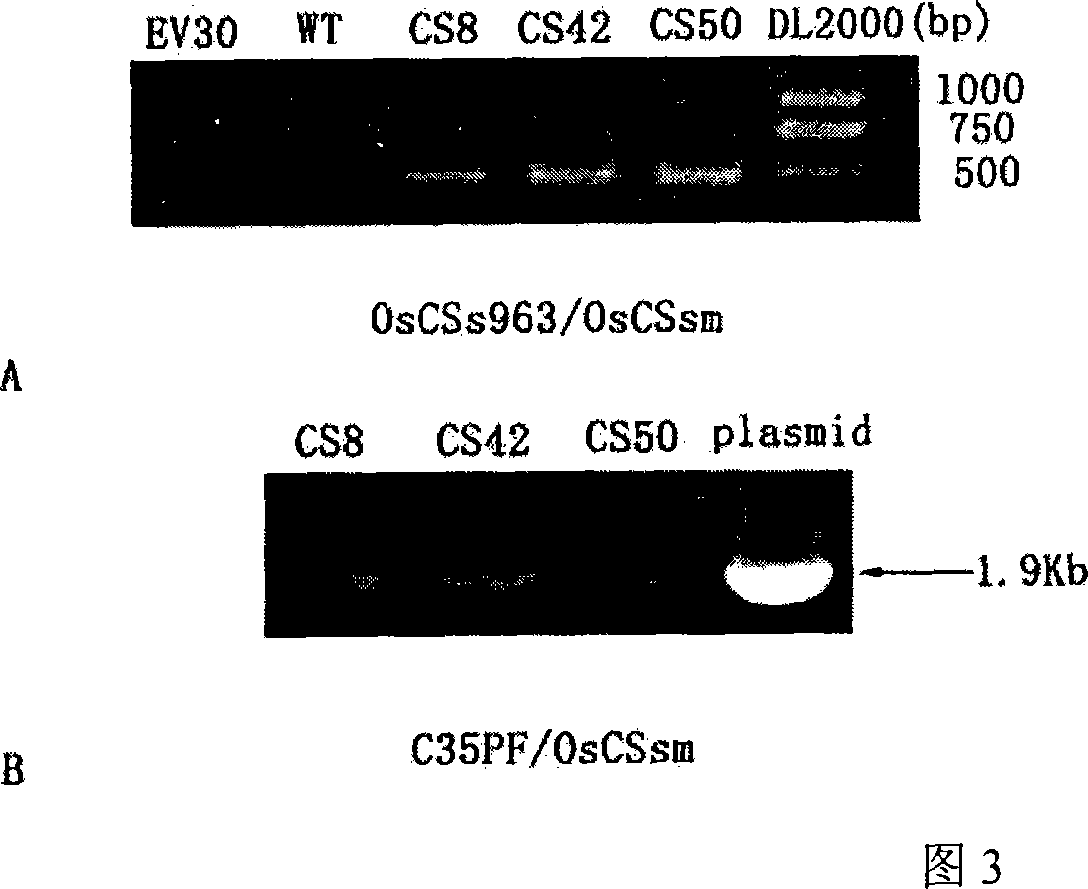Rice OsCS coded sequence and application thereof
A rice, coding technology, applied in the field of molecular biology, physiology and genetic engineering
- Summary
- Abstract
- Description
- Claims
- Application Information
AI Technical Summary
Problems solved by technology
Method used
Image
Examples
Embodiment 1
[0037] Cloning of Rice OsCS Gene
[0038] 1. Take the rice leaves grown in the greenhouse (25°C) (two leaves and one heart stage) and immediately put them in liquid nitrogen for cryopreservation. It should be noted that the materials selected in this experiment are not necessarily related to the selected rice varieties.
[0039] 2. Extraction of DNA
[0040]Take part of the tissue, grind it with a mortar, add it to a 50ml centrifuge tube filled with preheated lysate, keep it warm at 65°C for 40min, and centrifuge. RNaseA (0.5 μg / ml) was added to the supernatant, and the RNA was digested at 65°C for 1 h; the protein was pumped once with an equal volume of phenol / chloroform / isoamyl alcohol (25 / 24 / 1), the DNA was precipitated with ethanol, and washed twice with 70% ethanol. Repeat, and finally dissolve the DNA with TE solution. 0.8% agarose gel was used to check the quality of DNA.
[0041] 3. Cloning of the full-length gene
[0042] The degenerate primers were designed accor...
Embodiment 2
[0044] Sequence information and homology analysis of rice OsCS gene
[0045] The length of the novel rice OsCS gene of the present invention is 1425bp, and the detailed sequence is shown in SEQ ID NO.1. The polypeptide encoded by the gene consists of 475 amino acid residues, with a molecular weight of 52443.55 Daltons and an isoelectric point of 8.268. See SEQ ID NO.2 for the detailed sequence.
[0046] The coding region sequence of the full-length rice OsCS gene and its encoded protein sequence were analyzed by the BLAST program in the Non-redundant GeneBank+EMBL+DDBJ+PDB and Non-redundant GeneBank CDS translations+PDB+SwissPort+Superdate+PIR databases The homology of acid and protein was detected, and it was found that it has certain homology with the CS of carrot, tobacco, sugar beet, Arabidopsis and citrus. At the amino acid level, there is greater than 70% similarity (see Table 1). It can be seen from the above that the OsCS gene has high homology with the CS genes of c...
Embodiment 3
[0049] Copy number analysis of rice OsCS gene
[0050] A large amount of rice genomic DNA was extracted by CTAB method, 10 μg of DNA was digested with DraI, EcoRI and HindIII respectively, fragments were separated by 0.8% agarose gel, and the DNA was transferred to Hybond-N + fixed on a nylon membrane; using the rice OsCS gene as a probe to carry out Southern hybridization to identify its copy number in rice, the results showed that the OsCS gene was multi-copy.
PUM
| Property | Measurement | Unit |
|---|---|---|
| molecular weight | aaaaa | aaaaa |
Abstract
Description
Claims
Application Information
 Login to View More
Login to View More - R&D
- Intellectual Property
- Life Sciences
- Materials
- Tech Scout
- Unparalleled Data Quality
- Higher Quality Content
- 60% Fewer Hallucinations
Browse by: Latest US Patents, China's latest patents, Technical Efficacy Thesaurus, Application Domain, Technology Topic, Popular Technical Reports.
© 2025 PatSnap. All rights reserved.Legal|Privacy policy|Modern Slavery Act Transparency Statement|Sitemap|About US| Contact US: help@patsnap.com



